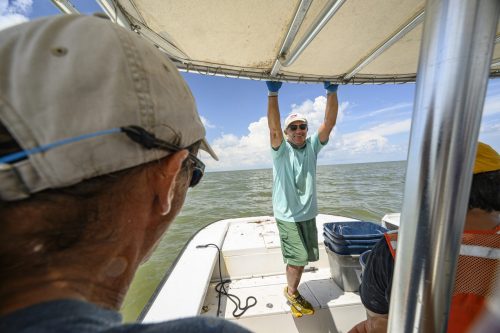Gavin Naylor P.h.D. is the director of the Florida Program for Shark Research.
1. Where are you from?
England
2. Why did you want to be a scientist when you grew up?
I did not initially intend to be a scientist but have always been curious. My curiosity drove me to find out how things worked and being a scientist allows me to do this full time.
3. How did you come to study sharks?
I have always been interested in the question “Why are there so many different kinds of living things”. This requires understanding patterns both in the fossil record and among living organisms. I chose to study sharks and rays because they have a long evolutionary history, a reasonably good fossil record, are well represented by living forms and have a number of unusual traits not seen in other vertebrate animals. In short, they are both intrinsically interesting and allow us to address evolutionary questions with broader implications
4. What are the current projects you are working on?
Many projects: all associated in some way with 3 overarching long tern projects (1)Chondrichthyan Tree of Life, (2) comparative genomics of sharks and rays, (3) comparative skeletal anatomy of sharks and rays
5. Why should people care about your work?
Why care about anything? Because it’s interesting, fun and engaging and can teach us new ways of understanding our place in the universe. If you had all the money in the world and had cured all the diseases in the world what would you do with your time….. The answer for most of us is spend it thinking about interesting ideas.

6. What is your favorite shark or shark fact and why?
The rare deep sea shark Euprotomicroides zantedeschia. It generates luminous fluid from a gland in its cloaca. We believe that it may release clouds of luminous fluid at depth to distract would be predators – in much the same way as an octopus deploys clouds of ink to avoid predation